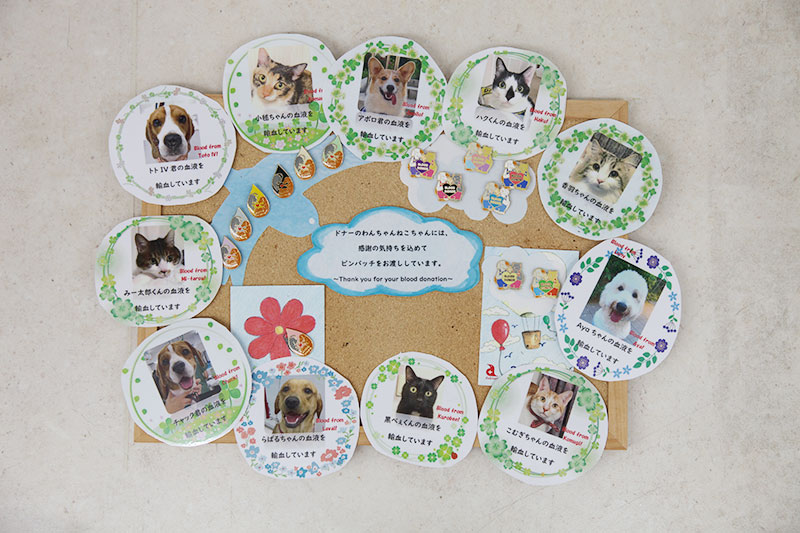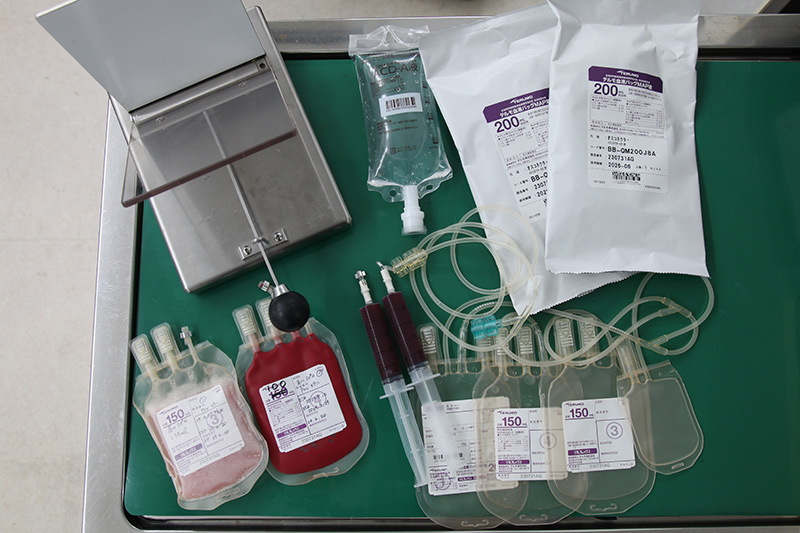Blood Transfusion in Animals
There are situations in which animals require blood transfusions due to illness or surgery.
Going through blood transfusion in those situations can sustain dogs and cats’ lives.
Blood types for dogs
In dogs, there are over 9 classified blood types, but the critical factor during transfusion is the DEA1.1 blood type. Determining whether it is DEA1.1(+) or DEA1.1(-) through prior testing enables prompt transfusions during emergencies. It is advisable to determine your pet’s blood type if it is unknown.
Blood types for cats
Similarly, cats have three blood types (A, B, AB), with type A being most common domestically. However, finding suitable donors can be challenging for type B or AB cats such as Scottish Folds, Abyssinians, and British Shorthairs.
Blood Donors
Due to the increasing lifespans of animals, the demand for blood transfusions has been rising annually. Unlike human healthcare, there is no national organization supplying blood products for animal medicine. Additionally, the transfer of blood products between hospitals is prohibited by law. Consequently, each animal hospital independently gathers donors and conducts blood donations and transfusions. To promptly perform transfusions in emergencies, it is necessary to stock blood products; however, these have expiration dates, so the cooperation of donors who regularly donate blood is essential. If your pet is healthy and meets certain criteria, you can register as a donor. Your cooperation is greatly appreciated.

Donor Requirements
– Dogs: 1-7 years old, over 10 kg, and vaccinated against certain diseases.
– Cats: 1-7 years old, over 4 kg, vaccinated, and strictly indoor pets.
* If your pet has previously received a blood transfusion or has experienced pregnancy or childbirth, it is not eligible to donate.
Blood Donation Process
1. Registration involves pre-donation blood tests to determine blood type and check for bloodborne infections.
2. On donation day, donors should skip breakfast for safety, and optionally take a sedative medication beforehand to reduce anxiety.
3. Blood collection from the jugular vein involves shaving and sterilization, ensuring aseptic conditions. Donors receive light sedation during collection to ensure safety.
4. After donation, donors receive fluids via IV to replenish lost fluids.
5. Donors can return home the same day but are advised to rest for several days.

Donation Frequency: Initially twice a year, then up to three times a year thereafter, adjusted by weight.
Blood collection volumes: The average blood collection volumes are approximately 40ml for cats and 200ml for dogs, adjusted according to body weight.
Acknowledgments for Donors
Registered donors receive:
1.Once a year health check-up (conducted during blood donation) + vaccine antibody titer test (Vaccines administered at half price)
2.Food as a thank-you gift after each donation.
3.One free blood transfusion available when needed in the future
(Various tests including compatibility testing fees will be required)
Transfusion Side Effects
Before transfusion, cross-matching tests are conducted using donor and patient blood to ensure compatibility. Even if blood types match, abnormal results such as clotting during cross-matching can lead to incompatible transfusions, thus transfusions are generally not performed. Even when compatibility is confirmed through cross-matching, adverse reactions can occur during transfusion. Immune reactions can result in mild symptoms such as vomiting or lethargy, but severe cases may present with fever, arrhythmia, or collapse. Therefore, transfusions are cautiously administered starting with minimal flow rates, increasing gradually if no adverse reactions occur. Vital signs are monitored frequently during transfusion to promptly detect any changes in condition.
Case
Labrador Retriever, spayed female, 28 kg:
This patient donated blood nine times between ages 2 to 6. At age 10, she required emergency surgery due to severe bleeding from liver cancer. Thanks to transfusions stabilizing her condition, the surgery successfully removed all cancerous tissue. Two years later, she continues to enjoy a healthy life.


